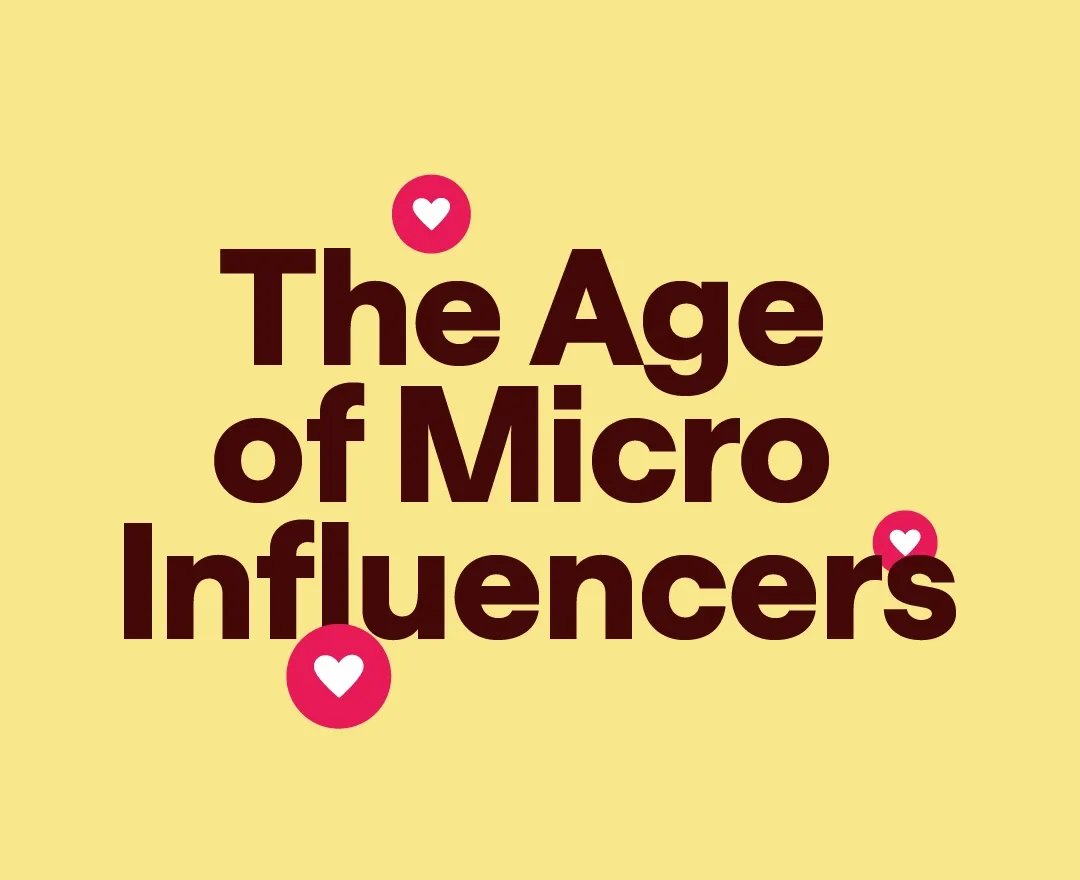Pop quiz: who do consumers trust the most?
A: Brands
B: Celebrity influencers
C: Micro-influencers
If you said ‘C,’ you’d be right. In fact, 69% of consumers trust influencers, friends, and family over information coming directly from a brand, and only 11% of consumers prefer celebrity influencers.
This is because people trust people. And with trust levels between consumers and companies in the US being at their lowest since 2016, brands need to do everything in their power to claw back the trust they’ve lost.
So, where should brands turn? To influencer marketing, of course! And we’re not talking about the Addison Rae’s of the world. We’re thinking on a smaller scale.
Let’s dive into the world of micro-influencer marketing.
People buy from people
Influencer and celebrity marketing, which seeks to leverage an audience’s positive perception of a person with status, is nothing new. In fact, the first celebrity endorsement of a commercial product happened all the way back in the 1880s. But the way people see celebrities has changed a lot in the past 140 years.
Today, 39% of people say authenticity is the most important attribute when learning about a company, product, or brand. And modern consumers see the celebrities and major influencers who are paid hundreds of thousands of dollars to promote products on their social platforms as far from authentic.
But that doesn’t mean influencer marketing is dead. Instead, we’re seeing the rise of the micro-influencer.
Savvy brands will recognize this shift in consumer sentiment and adjust their strategies accordingly, shifting budgets away from major names and towards smaller creators who hold more power in their niche.
Does size matter?
A small following doesn’t necessarily equal limited impact. Remember, it’s not the size of the following that matters, but what you do with it!
Micro-influencers are dominating on social media. While they take a smaller part of the follower pie, typically racking up between 1,000 and 10,000 followers, they can offer massive value to brands that are willing to try something new.
Micro and nano-influencers may have much smaller audiences than big creators like James Charles and Molly-Mae Hague, but they exist within tight-knit online communities where they hold greater sway over a smaller number of people.
As they have fewer fans calling for their attention, micro-creators have more opportunities to engage directly with their followers by responding to their DMs, comments, and questions — all things that position them more as authentic or trustworthy friends than shadowy figures on the internet.
Partnering with micro-influencers for macro impact
Micro-influencers might be small, but they’re mighty. If you want your influencer marketing campaign to pack macro impact, why not partner with micro-influencers in your niche? There are a ton of benefits, including:
1) High engagement
According to one study, nano-influencers see engagement rates of around 4% compared to macro-influencers, who see only around 1.3% engagement. Micro-influencers have smaller followings but much closer relationships with their fans, meaning their posts reach a higher percentage of their audience, with more watching, commenting, sharing, liking, and buying.
2) Affordability
This is simple math. Lower endorsement fees + higher engagement = higher ROI on your marketing investment. Plus, the cost of partnering with one celebrity or major influencer is equal to engaging multiple micro-creators who likely offer better value for money.
3) Close relationships with their audience
Micro-influencers are able to cultivate more intimate connections with their followers. Considering that 48% of brands prioritize influencers’ relationships with their audiences when running campaigns, picking a micro-influencer is a no-brainer.
4) Targeting niche interests
Everyone knows about Booktok and the YouTube beauty community, but have you heard of Gorpcore? What about geocaching? Or the knitting community? If you’re selling a product that’s only relevant to a small audience with a niche interest, like bookbinding, micro-influencers who hold sway over their small online communities offer you the best shot at reaching them.
5) Trust
One of the most compelling arguments for partnering with smaller creators is the trust their audience has in them. While trust in bigger influencers is waning, consumers still see micro-creators as relatable and trustworthy, turning to their favorite influencers for advice, connection, and product recommendations.










